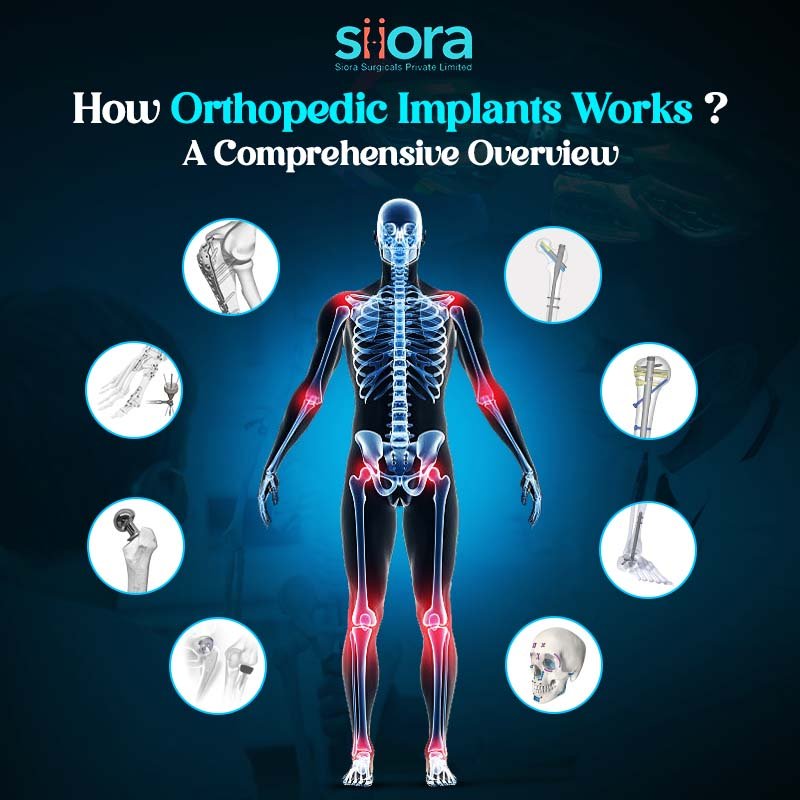Orthopedic implants have revolutionized modern medicine, helping millions of people regain mobility, reduce pain, and improve their quality of life. Whether used to repair fractures, replace joints, or support damaged bones, these medical devices play a crucial role in orthopedic surgery. But how exactly do they work? In this comprehensive guide, we’ll explore the science behind orthopedic implants, their types, materials, benefits, and the healing process they facilitate.
What Are Orthopedic Implants?
Orthopedic implants are medical devices that surgeons place inside the body to support, replace, or reinforce damaged bones and joints. Depending on the condition being treated, these implants can serve as either temporary or permanent solutions. Manufacturers typically use biocompatible materials such as titanium, stainless steel, and specialized polymers to ensure the implants do not cause adverse reactions in the body.
Types of Orthopedic Implants
Fracture Fixation Implants
- Used to stabilize and align broken bones.
- Examples: Plates, screws, rods, and intramedullary nails.
Joint Replacement Implants
- Replace damaged joints to restore movement.
- Examples: Hip, knee, shoulder, and elbow prosthetics.
Spinal Implants
- Support the spine in cases of injury or degenerative conditions.
- Examples: Spinal rods, cages, and artificial discs.
Soft Tissue Fixation Devices
- Help in repairing tendons and ligaments.
- Examples: Suture anchors and interference screws.
How Do Orthopedic Implants Work?
Providing Structural Support
Orthopedic implants act as an internal support system for bones and joints. When a bone breaks, a surgeon may use screws, plates, or rods to hold the fragments together as they heal naturally. Similarly, joint replacement implants substitute worn-out joints with artificial components that restore normal function.
Enhancing Stability and Alignment
Misaligned fractures or joint degeneration can lead to instability and pain. Implants help maintain proper alignment, ensuring the bones heal in the correct position. This alignment reduces complications such as non-union (failure to heal) or malunion (healing in the wrong position).
Integrating with Bone Tissue
Designers create many modern implants to promote bone growth around them, a process known as osseointegration. Materials like titanium encourage bone cells to grow and adhere to the implant’s surface, strengthening the bond between the implant and the bone over time.
Reducing Pain and Restoring Mobility
Joint replacement implants, such as those used in hip or knee replacements, replace worn-out cartilage and bone with smooth, artificial surfaces. This reduces pain caused by bone-on-bone friction and allows for smoother movement, significantly improving a patient’s mobility.
Do Orthopedic Implants Enhance Bone Healing?
Yes, orthopedic implants play a significant role in enhancing bone healing. Here’s how:
Stability Promotes Healing
Bones heal best when they are held in the correct position without excessive movement. Plates, rods, and screws provide this stability, preventing further damage and allowing new bone tissue to form efficiently.
Biocompatible Materials Encourage Growth
Advanced implant materials like titanium and bio-ceramics are specifically chosen because they interact positively with bone tissue. Some implants even have coatings that stimulate bone growth, accelerating the healing process.
Reducing Stress on Healing Areas
By redistributing weight and pressure, implants reduce the load on healing bones and joints. This helps prevent complications such as re-fractures and allows the body to recover at a steady pace.
Materials Used in Orthopedic Implants
Metals
- Titanium: Lightweight, strong, and promotes bone integration.
- Stainless Steel: Corrosion-resistant and durable.
Polymers
- Polyethylene: Used in joint implants to provide smooth movement.
- PMMA (Bone Cement): Helps fix implants in place.
Ceramics
- Zirconia and Alumina: Used in joint replacements for their durability and biocompatibility.
How are Orthopedic Implants Applied?
Pre-Surgery Preparation
- Imaging tests (X-rays, CT scans) to assess the affected area.
- Preoperative planning by the surgeon.
Surgical Procedure
- Incision is made to access the bone or joint.
- The implant is positioned and secured using screws, cement, or press-fit techniques.
- The incision is closed, and post-surgical care begins.
Recovery and Rehabilitation
- Physical therapy to regain strength and movement.
- Regular follow-ups to monitor healing and implant integration.
What Are the Potential Risks and Complications of Using Orthopedic Implants?
While orthopedic trauma implants are generally safe, potential risks include:
- Infection: Bacterial infections may require additional treatment.
- Implant Failure: Over time, implants may wear out or loosen.
- Allergic Reactions: Some patients may be sensitive to certain implant materials.
Conclusion
Orthopedic implants have transformed the field of medicine, offering effective solutions for fractures, joint replacements, and spinal conditions. By providing structural support, ensuring proper alignment, and encouraging bone healing, these implants help patients regain mobility and lead pain-free lives. Advances in materials and technology continue to improve the durability and effectiveness of these medical devices, making orthopedic surgery safer and more efficient than ever.







